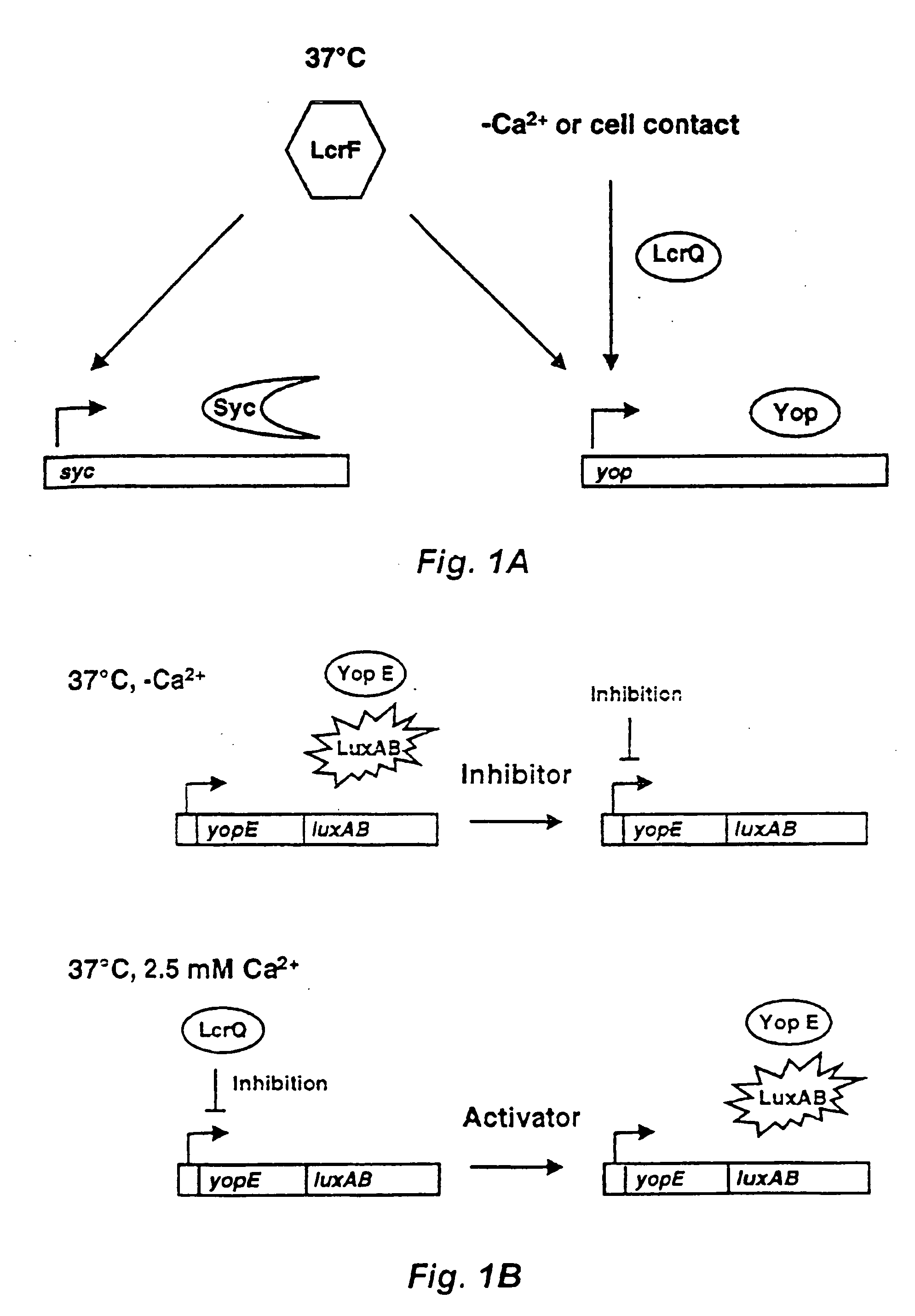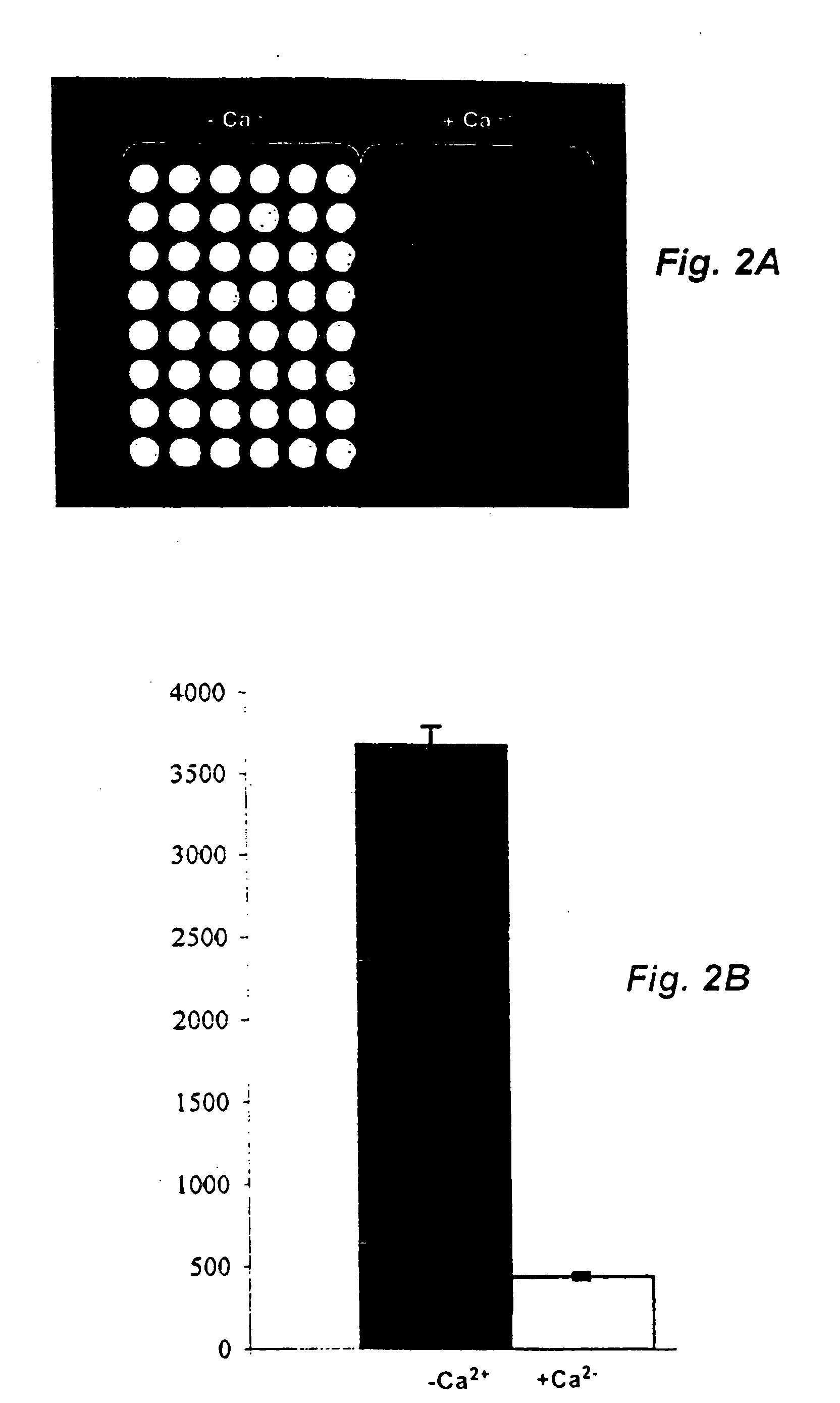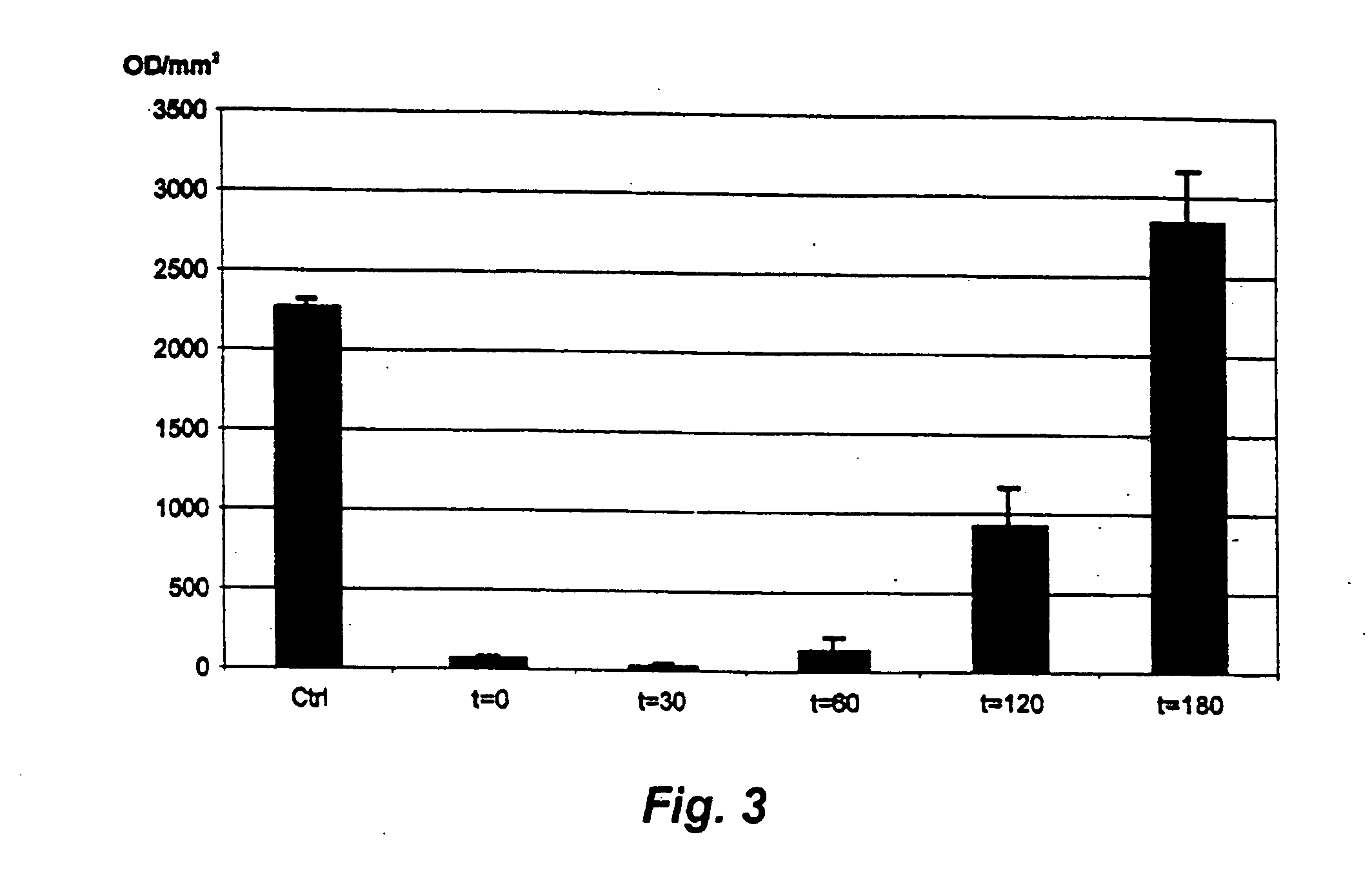Method and probe for identifying bacterial virulence modifying agents, agents thus identifed, and their use
a technology of bacterial virulence and modifying agents, which is applied in the field of methods and probes for identifying bacterial virulence modifying agents, and the agents thus identifed, can solve the problems of hard control of resistance, and achieve the effects of reducing light emission, stable growth, and sufficient dmso tolerance of assays
- Summary
- Abstract
- Description
- Claims
- Application Information
AI Technical Summary
Benefits of technology
Problems solved by technology
Method used
Image
Examples
Embodiment Construction
[0066] General. A compound collection consisting of 9,400 unique substances (ChemBridge, DiverSet F) was screened for inhibition of the luxAB reporter signal using the non-virulent strain pIB29EL. The compounds were screened in duplicate at a final concentration of 20 μg / mL. Assay interfering compounds, e.g. potential luciferase inhibitors, were identified by addition of hits from the primary screen to assay wells 10-20 min prior to addition of n-decanal. Compounds showing activity in one of the duplicate wells were re-screened to confirm activity or the lack thereof. The complete screening campaign gave about 60 compounds that caused at least 40% inhibition (duplicate average) of the luciferase light signal. For most of these compounds a dose / response relationship was established, and inhibition of bacterial growth was examined. A number of the compounds were found to have an IC50 for inhibition of the luciferase light signal of 50 μM or less. Compounds 3-5 are representative examp...
PUM
| Property | Measurement | Unit |
|---|---|---|
| Temperature | aaaaa | aaaaa |
| Temperature | aaaaa | aaaaa |
| Temperature | aaaaa | aaaaa |
Abstract
Description
Claims
Application Information
 Login to View More
Login to View More - R&D
- Intellectual Property
- Life Sciences
- Materials
- Tech Scout
- Unparalleled Data Quality
- Higher Quality Content
- 60% Fewer Hallucinations
Browse by: Latest US Patents, China's latest patents, Technical Efficacy Thesaurus, Application Domain, Technology Topic, Popular Technical Reports.
© 2025 PatSnap. All rights reserved.Legal|Privacy policy|Modern Slavery Act Transparency Statement|Sitemap|About US| Contact US: help@patsnap.com



